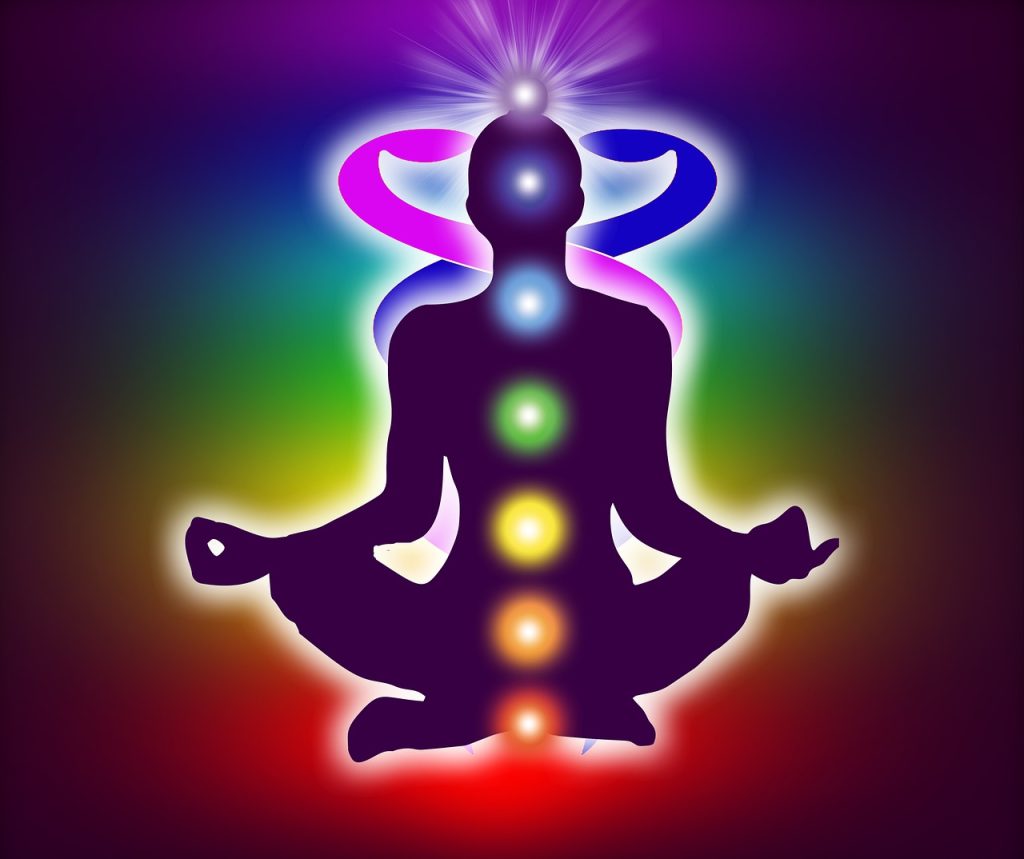Mantra yoga, also known as japa, is a unique form of yoga that combines physical postures with the mindful repetition of specific sounds or words. This practice, deeply rooted in ancient wisdom, facilitates spiritual development, concentration, and emotional tranquility.
Understanding Mantra in Yoga
A mantra is a sacred utterance, a sound, a syllable, word or phonemes, or group of words believed to hold spiritual power when chanted or meditated upon. The term originates from Sanskrit, where ‘manas’ denotes the mind, and ‘tra’ translates to a tool or instrument. It is, therefore, commonly interpreted as “a tool for the mind” or “that which, when reflected upon, brings liberation.”
Mantras are mystical formulas composed of sacred syllables, initially revealed to the Rishis (seers or sages) in profound states of meditation. They form one of the earliest components of yoga and perhaps the first type of meditation ever developed. The most popular mantra is Om or Aum, often used as the seed mantra in more extended chants. Primarily composed in Sanskrit, Pali, Tibetan, and Prakrit, they are believed to possess magical powers for healing, protection, and prosperity.
However, in mantra yoga, they take on a more profound role, primarily facilitating spiritual development.
Delving into Mantra Yoga
Mantra yoga is a meditative practice that focuses on the mindful chanting of sacred sounds, synchronized with conscious breathing, to quiet the mind, cultivate spiritual energy, and engender enlightenment. This ancient discipline is founded on the belief that everything we do involves energy, which forms part of a larger energetic field known as prana or life force.
In mantra yoga, the practitioner repeatedly chants a specific mantra, directing this energy inward, allowing us to tap into our deeper selves and gain a greater mastery over our minds.
The Pratyahara Effect
Pratyahara, a Sanskrit term that means ‘withdrawal of the senses’, is one of the key benefits of mantra yoga. By focusing on the repetition of sound vibrations, our attention draws inwards, leading to the profound state of pratyahara. This state allows practitioners to deeply immerse in the present moment, devoid of any awareness of their surroundings.
Practices in Mantra Yoga
Mantra yoga encompasses various practices, including japa, kirtan, and community chanting.
Varieties of Chanting
Different methods exist for chanting mantras. They can be spoken aloud, softly whispered, or silently recited in the mind.
- Vaikhari Japa is the loud recitation of the mantra, practiced to improve pronunciation, deepen concentration, and connect with the vibration of the words.
- Upamsu Japa is softly whispering or humming the mantra, practiced to foster peace and harmony.
- Manasika Japa, the most advanced form, is the internal chanting within the mind, requiring a high level of focus and attention.
Techniques in Mantra Yoga
Japa Meditation Technique
Japa meditation, also known as mantra meditation, involves the mindful recitation of mantras. Here’s a step-by-step guide to practicing japa meditation:
- Find a Comfortable Position: Sit comfortably with your eyes closed. Begin by slowly repeating your chosen mantra, either silently or aloud. Focus on the speed and rhythm of your chanting, the correct pronunciation, and the esoteric meaning of the mantra.
- Use a Mala: A mala is a string of 108 beads used to count the number of times the mantra is recited. The tactile sensation of the beads enhances focus and concentration.
- Maintain Concentration: If your attention shifts away from the mantra, gently bring your focus back to the sound and your breath. Continue this practice for several minutes, ideally completing a cycle of 108 repetitions.
Kirtan Meditation Technique
Kirtan is a devotional practice that involves the call and response singing of mantras set to music. The musical accompaniment helps to focus the mind and create a more potent effect than merely repeating the mantra.
Benefits of Mantra Yoga
Mantra Yoga offers numerous benefits, impacting the mind, body, spirit, and emotions. Some of the key advantages include:
- Improved Concentration and Memory: Mantra yoga enhances focus, leading to better memory and concentration abilities.
- Reduced Stress and Balanced Emotions: Regular practice of mantra yoga can help reduce stress and balance emotions, fostering a sense of calm and peace.
- Spiritual Development: Mantras are considered a path towards self-realization, dissolving bad karma and producing wisdom.
Practice Tips for Mantra Yoga
- Be mindful of where the sound vibrations resonate in your head, chest, and body.
- Let the mantra flow naturally without forcing it.
- Start with a simple and short mantra, gradually incorporating more complex mantras as you grow comfortable with the practice.
- Practice daily for 3-5 minutes initially, gradually increasing the duration as you gain comfort with the practice.
- Pay attention to your breath and mantra to enhance your focus.
Conclusion
Mantras play a crucial role in healing, meditation, personal growth, and prayer. Through the repetition of a mantra, practitioners can enter a deep meditative state, clear their mind of negative thoughts, and connect with their higher self. Practicing mantras can help us tap into the spiritual wisdom within us, become more mindful, and facilitate healing and transformation. Mantra yoga thus serves as a path to awakening our inner consciousness, connecting with our higher self, and attaining spiritual enlightenment.
